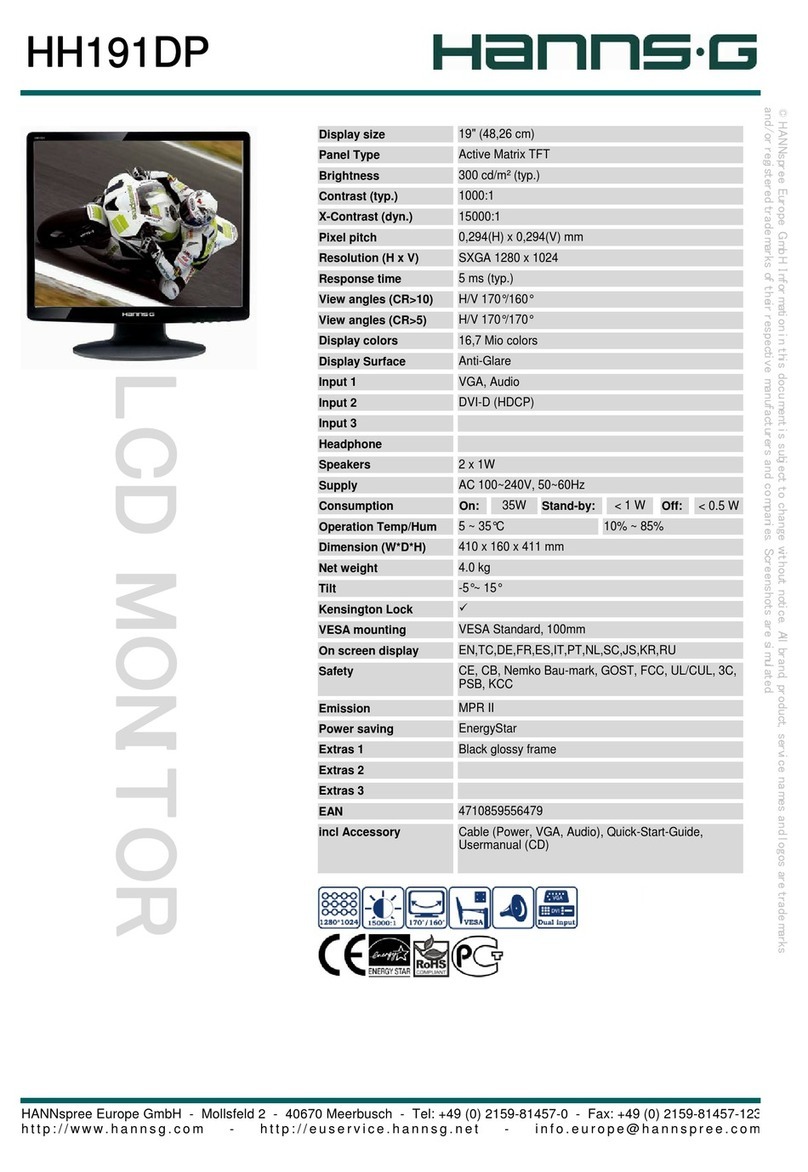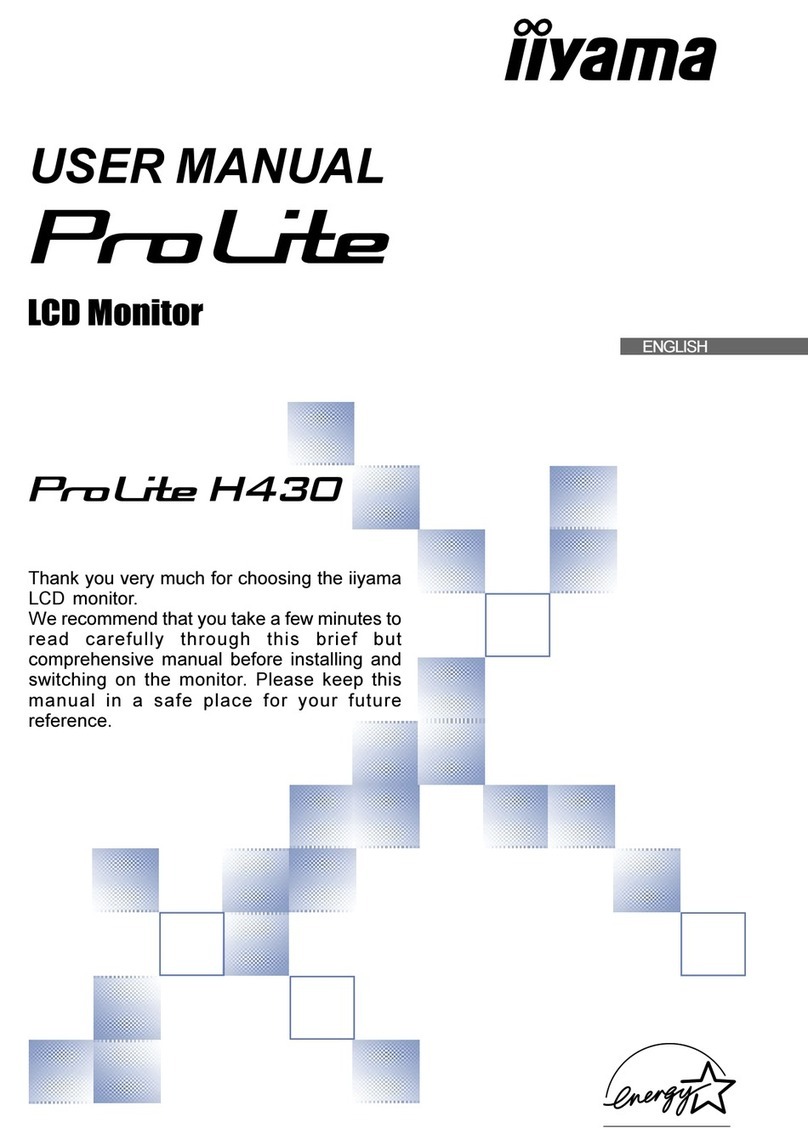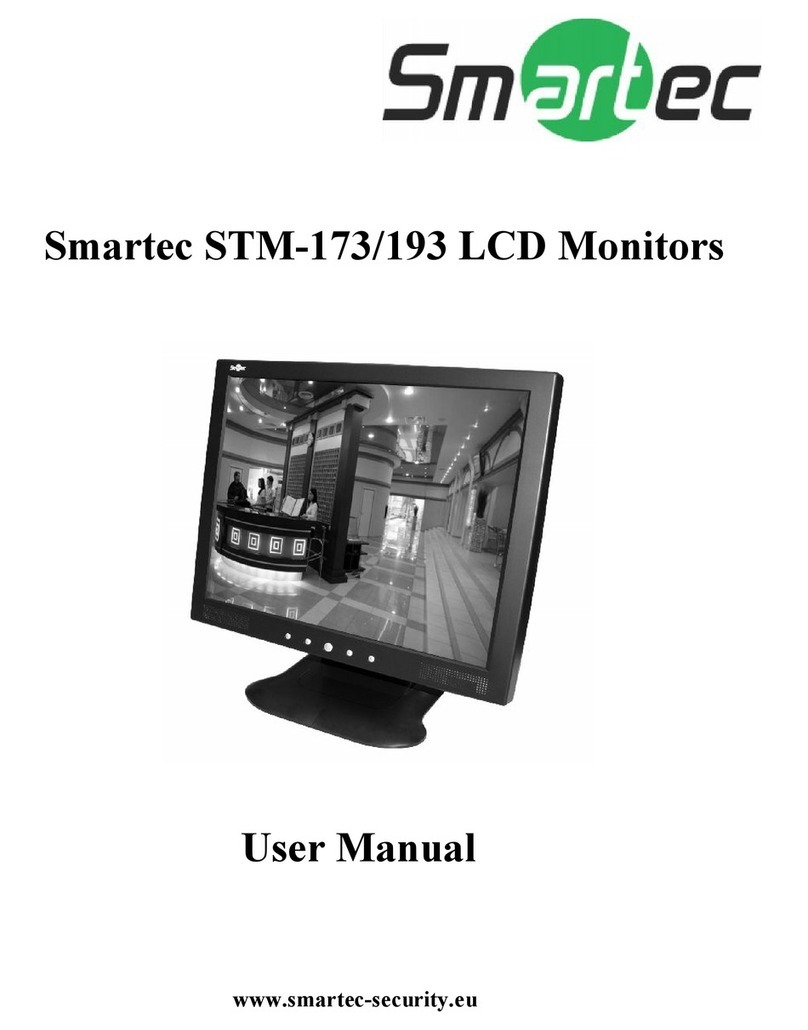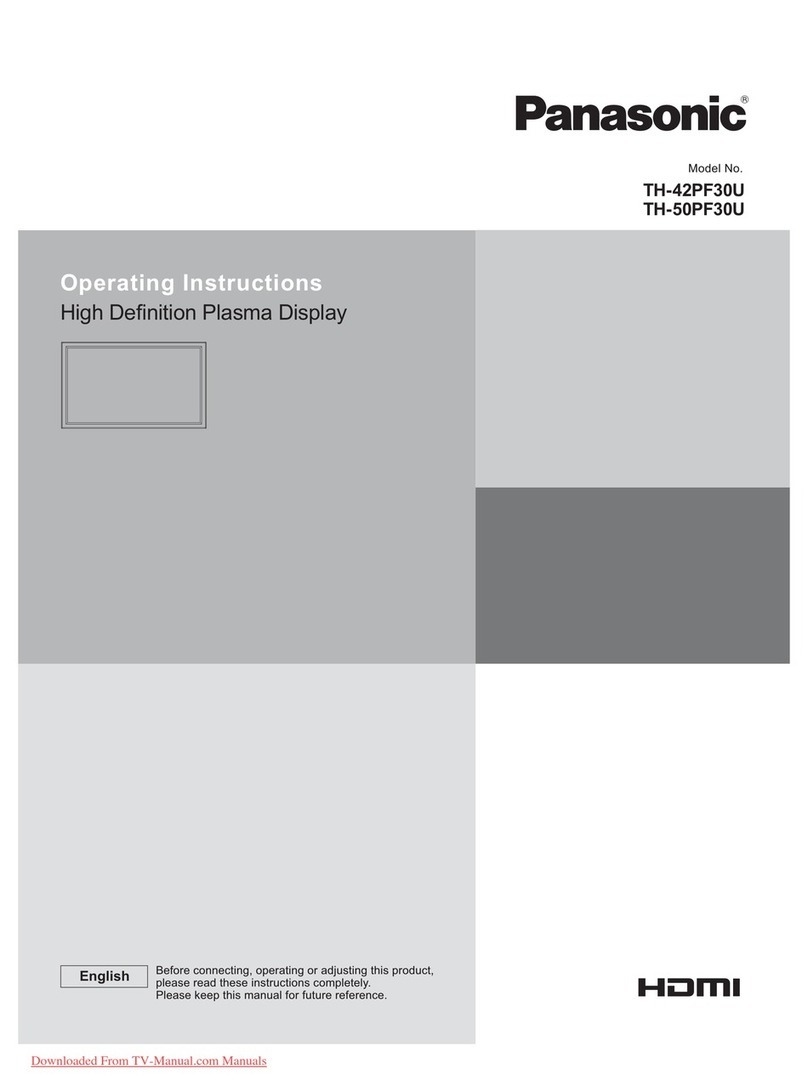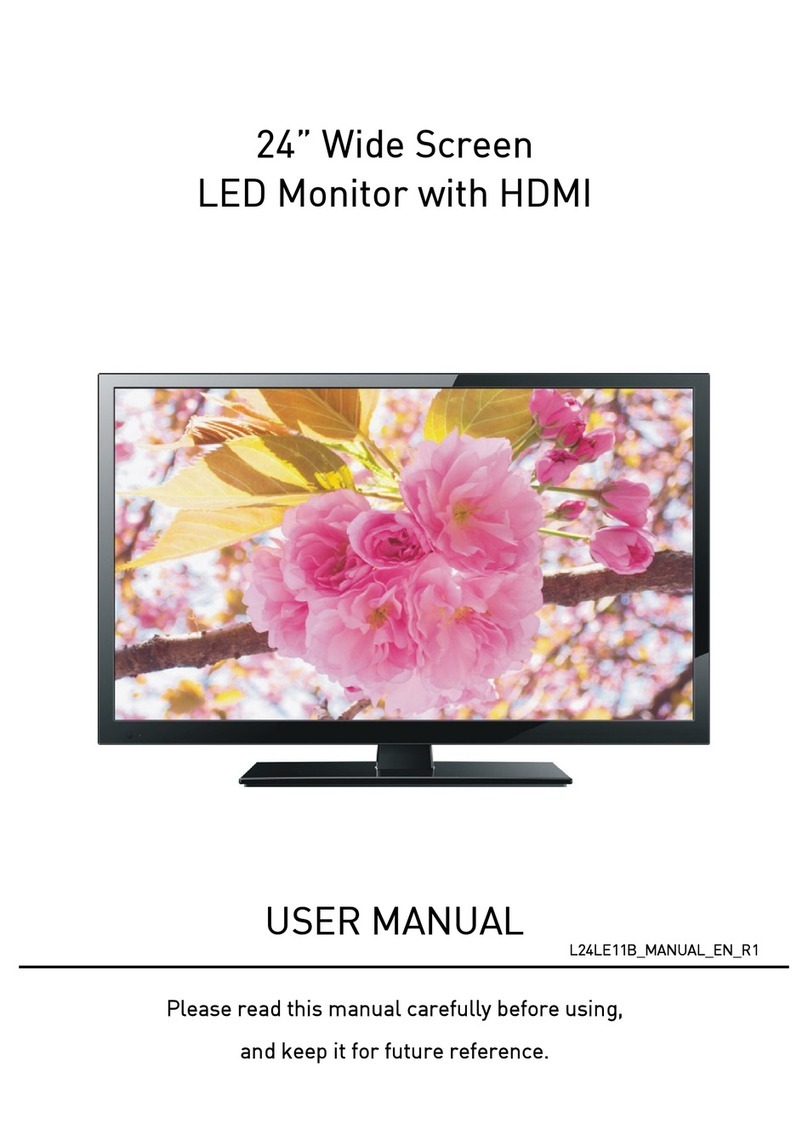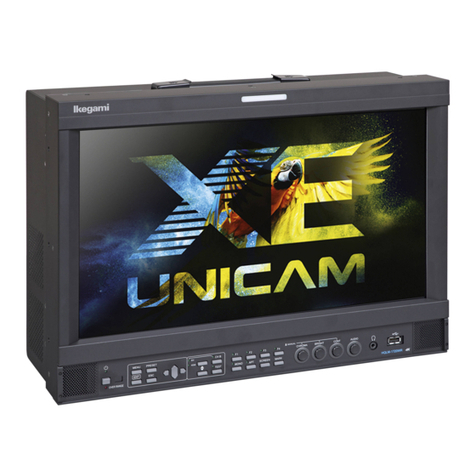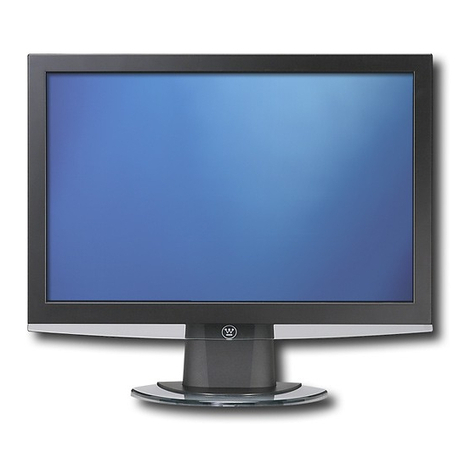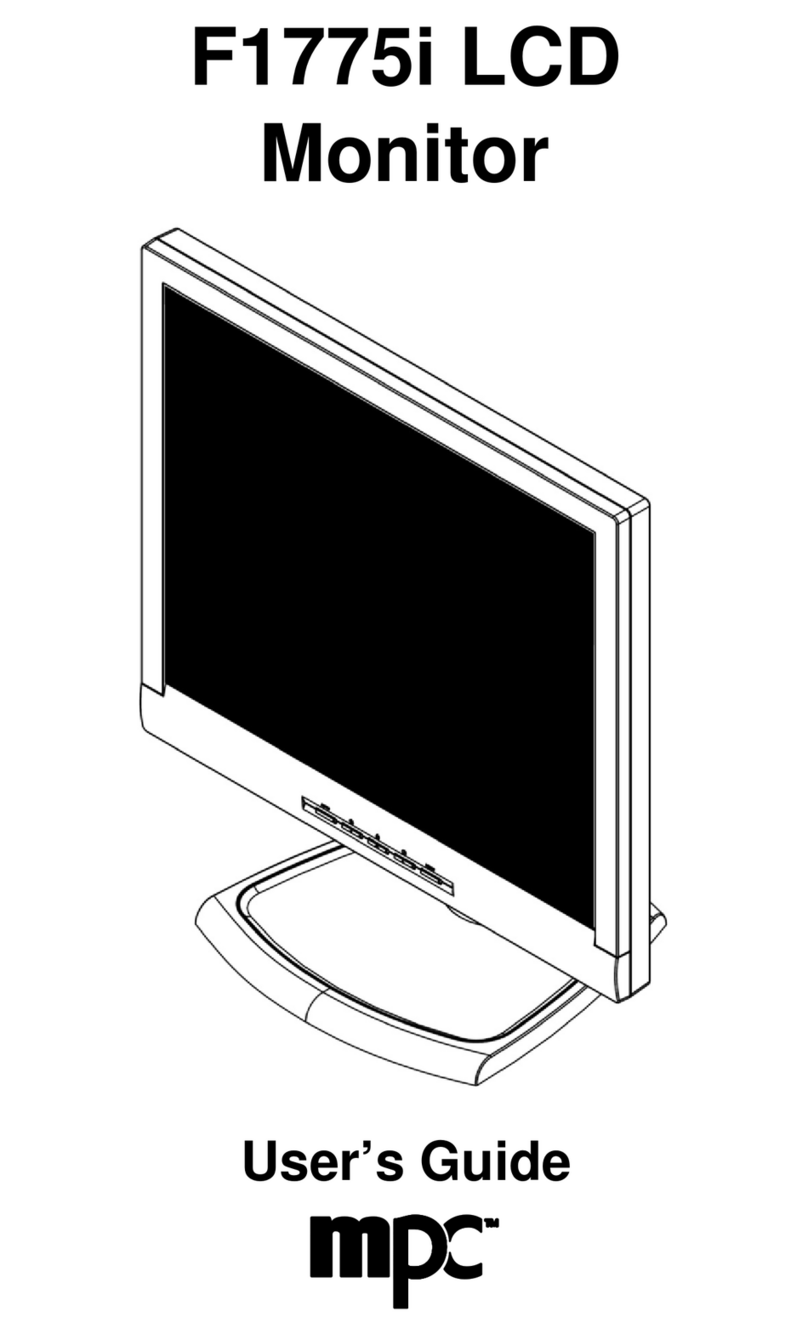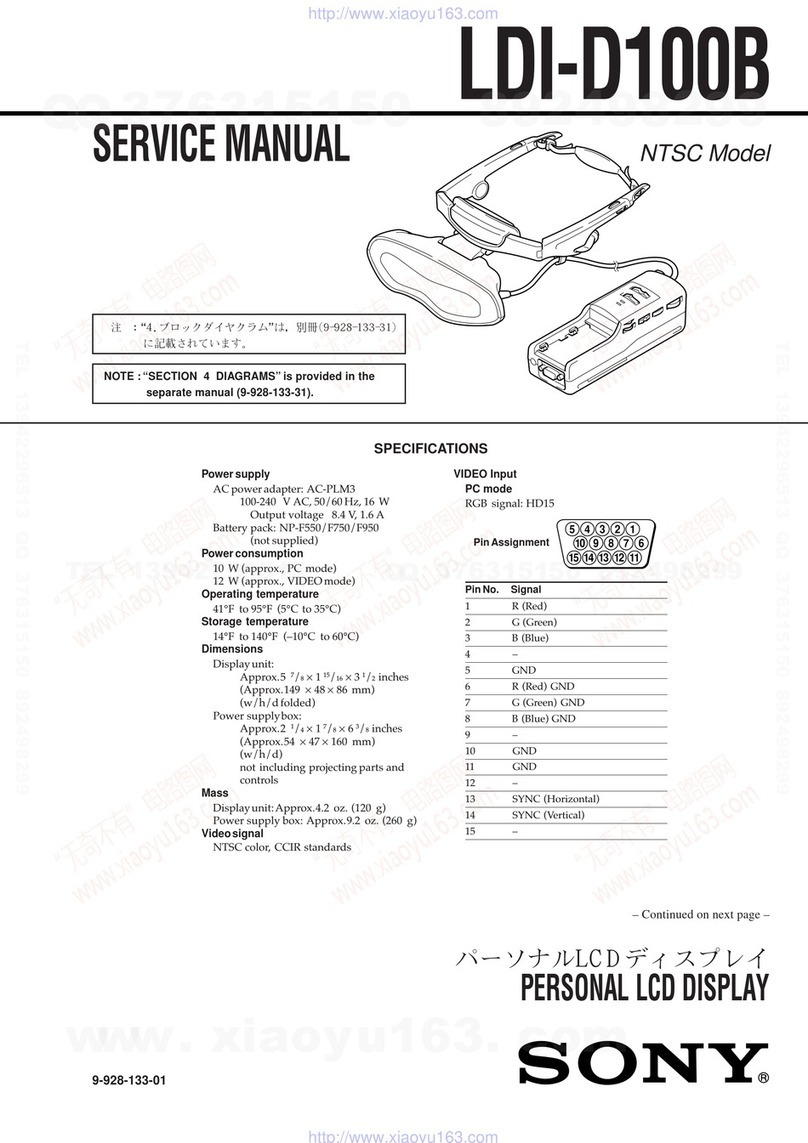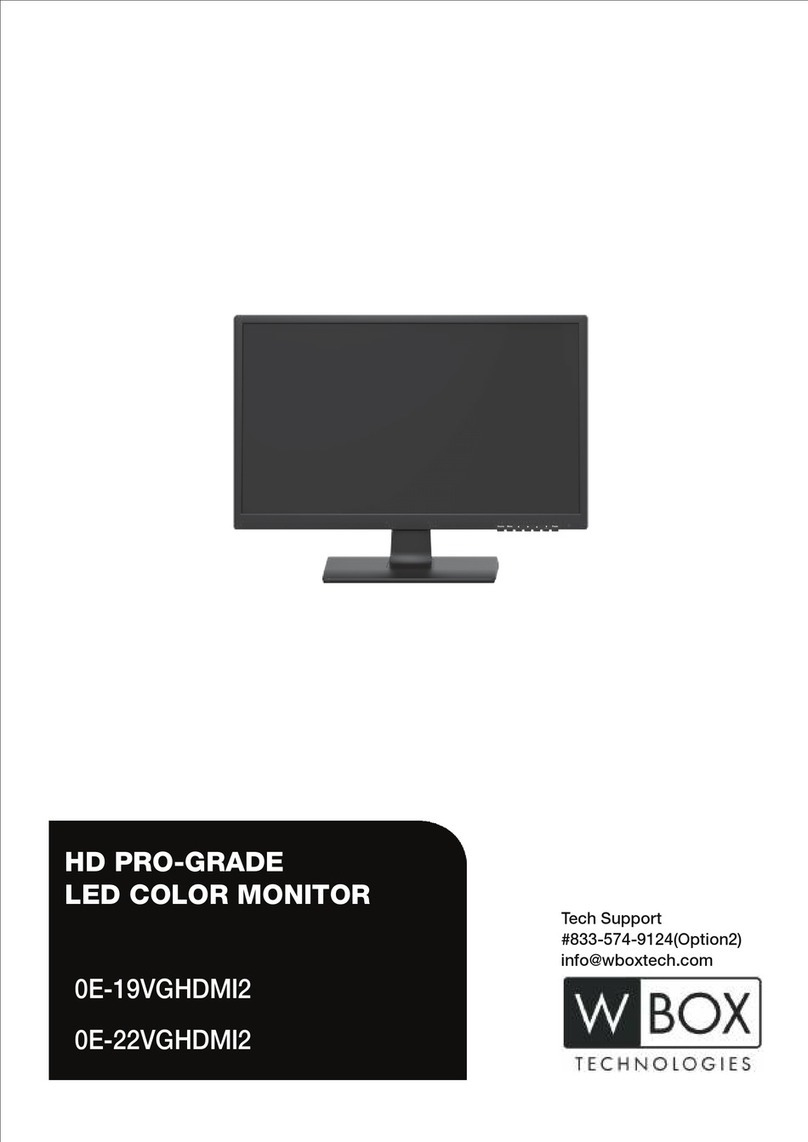Garnet SEELEVEL II 709-LL User manual

INSTRUMENTS LTD.INSTRUMENTS LTD.
Printed in Canada
MODEL 709-LL
MANUAL
IMPORTANT OPERATOR INFORMATION
DATE INSTALLED:_____________________________________________________________
SERIAL NUMBER: _____________________________________________________________
Signal Level Sender Height
Waste Water Tank
Fresh Water Tank
SEELEVEL II
TM
Tank Monitor

Page 2 709-LL Manual
Table of Contents
CHAPTER 1 - OVERVIEW.............................................................................................3
CHAPTER 2 - SYSTEM DESCRIPTION .....................................................................4
CHAPTER 3 - OPERATING INSTRUCTIONS ..........................................................6
CHAPTER 4 - DISPLAY CALIBRATION.....................................................................7
CHAPTER 5 - SENDER PROGRAMMING ...............................................................9
CHAPTER 6 - INSTALLATION GUIDE (NEW OEM INSTALLATIONS ONLY) ...............13
CHAPTER 7 - TROUBLESHOOTING GUIDE......................................................... 20
CHAPTER 8 - SERVICE AND WARRANTY INFORMATION ............................ 28
CHAPTER 9 - SPECIFICATIONS ............................................................................... 29
GARNET
SEELEVEL II
TM
Tank Monitor
MODEL 709-LL
709-LL Manual_v3.1 - 20-JuL-2015

Page 3
709-LL Manual
The SEELEVEL II TM Tank Monitor represents a massive leap
forward in level measurement technology for the Recreational
Vehicle industry. The SeeLeveL has a combination of features,
accuracy, reliability, and diagnostic capability that have never been
available before.
The SeeLeveL II will monitor the battery voltage and the water and
sewer holding tanks. The information is displayed on a 3 digit
alpha-numeric LED display. In addition, the system can display the
operating characteristics of each of the tank sending units, giving
it unsurpassed diagnostic capability.
CHAPTER 1 - OVERVIEW

Page 4 709-LL Manual
The SeeLeveL consists of a display unit that mounts inside the
RV, and sender panels that stick to the side of the holding tank.
A single two conductor wire is used to connect all the sender
panels to the display.
The Sender: Each sender panel is a exible self-adhesive printed
circuit board which is adhered to the side of the holding tank.
The sender panel can be cut to length to match the height of the
tank, and it auto calibrates itself so that it can read from Empty
to Full regardless of the height of the tank. The sender scans
the water level through the tank wall using advanced digital
techniques programmed into the sender microprocessor. When
the sender transmits the water or sewer level information to the
display, it sends a digital code that has built in error detection,
making it highly unlikely for the display to read an incorrect level,
even if the wiring is marginal. In addition to the level, the sender
also transmits diagnostic information about its operation. This
information can be used to determine if there is buildup of sludge
on the inside of the tank, or to determine if the sender is damaged
or delaminating from the side of the tank. If sludge buildup in the
tank becomes extreme the gauge will cease to operate properly,
so by monitoring the signal power the tank can be cleaned before
the buildup gets excessive. For tanks less than 7 inches tall, 50%
better accuracy is achieved by using the JS sender, which can be
shortened for a minimum of 4 inches. For tanks from 7 inches
to 13 inches tall, a single ES sender is used. For tanks from 13
inches to 25 inches tall, two ES senders can be stacked to allow
measurement of levels up to 24 inches.
The Display: The display receives the information from the three
sender panels via a single two conductor wire, and displays the
level information in percent of full on a three digit LED display.
When the front panel button for a particular tank is pressed, the
display powers up and displays the level for that tank. If the button
is pressed and released, the display will show the level for about
5 seconds and then shut down automatically. If another button
is pressed before the display shuts down, then the new level will
immediately be shown. If the same button is pressed twice, the
display will hold on that tank and continue to show updated levels
for 5 minutes before shutting off. This allows the user to monitor
the lling or draining of a tank. By pressing two buttons at once,
the diagnostic functions can be accessed; these are described in
detail in the troubleshooting chapter.
CHAPTER 2 - SYSTEM DESCRIPTION

Page 5
709-LL Manual
If a sender is operating properly and connected to the display with
good wiring, then the display will show the level normally. If the
wiring is disconnected, shorted, or cut, or if the sender panel is
defective, then the display will indicate an error code. The various
error codes are shown in the troubleshooting chapter.
With these diagnostic features and the digital nature of the tank
level sensing technology, it is almost impossible for the system
to indicate an incorrect water level, and in the very unlikely
event it does occur, servicing is greatly aided with the diagnostic
information.
The system also shows the RV battery voltage by measuring the
voltage which powers the display. The voltage is shown with a
resolution of 0.1 volt.

Page 6 709-LL Manual
The display is the only system component that is accessed by
the user. All user input to the display is done using the three
buttons along the bottom of the display. Operation of the display
is as follows
To read a water or sewer tank level:
1. Press the button corresponding to the tank to be checked and
release it, the display will show the level in percent on the LED
display. If no other button is pressed, then the display shut off
after about 5 seconds.
2. If another button (including BATT) is pressed before the
5 second time is up for the rst button, the display will
immediately switch to showing the new level or voltage. The
5 second timeout is restarted every time a button is pressed.
3. To continuously display a reading, press and release the
desired button, and then press the same button a second
time. When the button is released, the display will be in hold
mode, which is indicated by the decimal point on the right
hand side turning on. While the display is in the hold mode it
will recheck the level once per second so the user can watch
the level change while the tank is being lled or drained. The
display will automatically shut off after 5 minutes in hold
mode. To end the hold mode before the 5 minutes is up,
press any tank button, and the display will shut off.
To read the battery voltage:
1. Press the BATT button and release it, the display will show the
battery voltage on the LED display.
2. If no other button is pressed, then the display will shut down
after about 5 seconds. If the BATTERY button is held down,
the display will continuously recheck the voltage and show
the updated value. The reading may icker back and forth
between two values, for example, 12.6 and 12.7 volts. This is
normal behavior for a digital voltage display.
3. If another button is pressed before the 5 second time is up
for the BATTERY button, the display will immediately switch to
showing the value for the new button. The 5 second timeout
is restarted every time a button is pressed.
4. There is no hold mode for the battery voltage.
CHAPTER 3 - OPERATING INSTRUCTIONS

Page 7
709-LL Manual
CHAPTER 4 - DISPLAY CALIBRATION
To program the LED brightness:
1. If the display is to be used inside the coach, the LED brightness
should be low. If it is to be used in the service bay area where
sunlight can reach it, the LED brightness should be high.
2. To program the LED brightness, the display needs to enter
the brightness programming mode. To do this, press and
hold down the BATT button, the display will show the battery
voltage.
3. While continuing to hold down the BATT button, press and
hold down the WASTE button. Continue to hold down both
buttons for about 5 seconds until the display shows “bri”
to indicate the brightness programming mode. When this
occurs release both buttons.
4. The display will now indicate the brightness that is currently
programmed by showing “b-1”, “b-2”, “b-3”, or “b-4”, where
“b-1” is the minimum brightness and “b-4” is the maximum
brightness.
5. Press the WASTE tank button to increase brightness, or the
FRESH tank button to decrease brightness.
6. When the display shows the correct brightness, press the
BATT button to exit the programming mode.
To program the number of senders for each tank:
1. To program the number of senders for each tank, the display
needs to enter the sender programming mode. This should
only be done at the time of installation, there is no reason
to change the number of senders afterward. Make sure that
the number of senders programmed into the display matches
with the number of senders connected, otherwise the display
will show an error.
2. To enter the sender programming mode, press and hold down
the button for the tank to be programmed, the display may
show a level or an error message for that tank.
3. While continuing to hold down the button for the tank, press
and hold down the BATT button. The display will immediately
show ”dIA” (diagnostics), continue to hold down both buttons
until the display enters the programming mode, this should
take about 5 seconds.

Page 8 709-LL Manual
4. When the programming mode is entered, the display will
show “FrS” if doing the number of senders for the fresh tank
or “GrS” if doing the waste tank. When this occurs release
both buttons.
5. The display will now show “1SE” (one sender) or “2SE” (two
senders), based on what is currently programmed into the
display. These are the only two options, the display will not
work with more than two senders per tank.
6. To change the number of senders, press the tank button, each
time the button is pressed the display will switch to the other
number.
7. When the display shows the correct number of senders, press
the BATT button to exit the programming mode. Each tank
will need to be calibrated individually using this procedure.
The battery voltage is calibrated at the factory, this should never
need to be changed.

Page 9
709-LL Manual
CHAPTER 5 - SENDER PROGRAMMING
To program the 710ES sender for the correct tank:
1. Since the senders are all connected in parallel to save wiring
and to simplify installation, the senders must be programmed
so they know which tank they are on. The senders can be
programmed for either the fresh, grey, or black tank. This is
done with the two tabs on the top corners of the sender. See
the following diagram.
2. The senders default to fresh tank operation if the programming
is not altered. Consequently, if the sender is for the fresh tank,
nothing further needs to be done to it.
3. If the sender is for the grey tank, remove the tab that says
“GRY” next to it.
4. If the sender is for the black tank, remove the tab that says
“BLK” next to it.
5. This is all that is required to program the senders for the
correct tank. However, if you make an error, you have one
chance to correct it, as described below.
6. If the “GRY” tab has been removed and it should be a black
tank sender, or if the “BLK” tab has been removed and it
should be a grey tank sender, then cut out the recessed grey-
black correction tab that says “GBC” next to it. This reverses
the effect of the grey and black tabs.
7. If either the “GRY” or “BLK” tabs have been removed and it
should be for a fresh tank, then remove the other “GRY” or
“BLK” tab. When both the “GRY” and “BLK” tabs are removed,
it is equivalent to neither of them being removed.
8. If the sender is single, no further programming is required.
9. If dual stacked senders are used, the top sender must have
additional programming, as described below.
10. Refer to the 710ES sender programming diagram.
To program the 710ES sender as top or bottom:
1. Since the senders are all connected in parallel to save wiring
and to simplify installation, the senders must be programmed
so they know whether they are a single, top, or bottom sender.
This is done with the tab at the top center of the sender. See
the following diagram.

Page 10 709-LL Manual
2. The senders default to single or bottom operation if the
programming is not altered. Consequently, if the sender is for
single or bottom operation, nothing further needs to be done
to it (beyond programming it for the correct tank).
3. For a top sender, remove the tab that says “TOP” next to it.
4. This is all that is required to program the senders for single,
top, or bottom use. However, if you make an error, you have
one chance to correct it, as described below.
5. If the “TOP” tab has been removed and it should be a single
or bottom sender, then cut out the recessed top correction
tab that says “TC” next to it. This reverses the effect of the
top tab.
6. Verify that both the top and bottom senders have been
programmed for the correct tank.
To program the 710JS sender for the correct tank:
1. Since the senders are all connected in parallel to save wiring
and to simplify installation, the senders must be programmed
so they know which tank they are on. The senders can be
programmed for either the fresh, grey, or black tank. This is
done with the two tabs on the top corners of the sender. See
the following diagram.
2. The senders default to fresh tank operation if the programming
is not altered. Consequently, if the sender is for the fresh tank,
nothing further needs to be done to it.
3. If the sender is for the grey tank, remove the tab that says
“GRY” next to it.
4. If the sender is for the black tank, remove the tab that says
“BLK” next to it.
5. This is all that is required to program the senders for the
correct tank. However, if you make an error, you have one
chance to correct it, as described below.
6. If the GRY or BLK tab has been removed by mistake, the
sender can be changed to a fresh tank sender by cutting the
other corner tab (BLK or GRY).
7. Refer to the 710JS sender programming diagram.

Page 11
709-LL Manual
710ES SENDER PROGRAMING

Page 12 709-LL Manual
710JS SENDER PROGRAMING

Page 13
709-LL Manual
CHAPTER 6 - INSTALLATION GUIDE (NEW OEM INSTALLATIONS ONLY)
Wire Color Function
Red 18 gauge +12V power input to monitor
Black 18 gauge Ground
Blue 18 gauge Tank senders
Green 18 gauge Not used
1. Please refer to the “Troubleshooting and Installation Tips”
section in Chapter 7 for details on avoiding installation issues.
2. The installation consists of mounting the display inside the RV,
cutting and fastening the senders to the sides of the holding
tanks, connecting wiring, and programming the display. When
wiring DO NOT use spade connectors to join wires, only use
crimp on butt connectors or solder the wires together.
3. Mount the display by cutting a hole in the wall 3” wide by 1
7/8” high and bringing the wiring out through the hole to
connect to the display panel connector.
4. Connect the wiring according to the following table. It is
easier to connect the wiring to the display connector rst,
and then plug the connector into the display panel. The
sender needs to be grounded to a single ground wire from
the display. Make sure that the system ground is connected
to the breaker panel ground.
5. Determine where to mount the senders on the tanks. They
will need to have a at area on the side of the tank large
enough so the whole width of the sender is in contact with
the side of the tank, all the way from the top to the bottom
of the tank. Make sure that any metal is at least an inch away
from the sender. Clean the area well so that there is no dust,
grease, oil, water, etc., that would prevent the adhesive on the
sender from sticking.
6. Measure the height of the tank to determine how long the
senders should be. For tanks less than 13” tall, follow step 6.
For tanks greater than 13” tall, follow step 7.
7. For tanks less than 13” tall, a single sender is used. For tanks
less than 7” tall a 710JS sender should be used. The sender
ends should be 1/4” to 3/4” away from the top and bottom of
the tank, to allow for the thickness of the tank top and bottom
and any bows in them (see the diagrams). The senders are
calibrated to account for this distance from the bottom of
the tank. The ES sender is cut to the nearest even 1.5 inch

Page 14 709-LL Manual
in length, for example, a system with a tank height of 11.75
inches, cut the sender to be 10.5 inches long, this allows 5/8”
at each end when the sender is centered vertically on the
tank. The JS sender is cut to the nearest 1.0 inch in length.
IMPORTANT: Do not cut the 710ES sender shorter than 4-1/2
inches! The sender will not work if it is cut less than 4-1/2
inches. Do not cut the 710JS sender shorter than 4 inches!
The sender will not work if it is cut less than 4 inches.
8. For tanks greater than 13” tall, two stacked 710ES senders are
used. The sender ends should be 1/4” to 3/4” away from the
top and bottom of the tank, to allow for the thickness of the
tank top and bottom and any bows in them (see the diagrams).
The senders are calibrated to account for this distance from
the bottom of the tank. In addition, there needs to be a gap
of 1/16” to 1/8” to between the two senders. Therefore total
length of both senders will be: tank height -1/4”-1/4”-1/8”,
then rounded down to the nearest 1.5 inches. The top and
bottom senders should be approximately the same length for
best results. For example, if the tank height is 22”, then 22”-
1/4”-1/4”-1/8”=21 3/8”, so the total length of both senders
will be 21 inches. Make both senders 10.5” long.
9. To make the senders the right length (assuming they are too
long) they will need to cut off with a pair of scissors. The end
to be cut is the bottom end, which is the opposite end from
the top where the wires come out (see the diagrams). DO
NOT cut the sides, and DO NOT cut the 710ES sender shorter
than 4-1/2 inches or the 710JS sender shorter than 4 inches.
The cut must be in between the sensor pads, and the cut must
be made parallel to the existing bottom end. Double check
your measurements, if the sender is cut too short, it cannot
be lengthened.
10. The senders need to be programmed so they know which tank
they are on. This is done by selectively cutting off the tabs
on the top of the sender. See the chapter entitled “SENDER
PROGRAMMING” and the section “To program the 710ES or
710JS sender for the correct tank” for details.
11. For two stacked sender systems, the senders need to be
programmed so they know that they are being used as
top or bottom senders. See the chapter entitled “SENDER
PROGRAMMING” and the section “To program the 710ES
sender as top or bottom” for details.
12. Once the sender is cut to length and programmed, do a test
by taping the sender to the tank wall. Make sure there are no
air gaps between the sender and the tank. Verify operation
before permanently sticking the sender to the tank wall.
Once proper operation has been conrmed, carefully peel the

Page 15
709-LL Manual
710ES SENDER

Page 16 709-LL Manual
710JS SENDER

Page 17
709-LL Manual
backing paper off the adhesive. Do this slowly to prevent the
adhesive from being ripped off the sender, and to prevent
the backing paper from ripping. Be careful not to bend the
sender sharply in the process. Position the sender over the
side of the tank and carefully stick it down. MAKE SURE THAT
THE END WITH WIRES IS POINTING UP!! Position the bottom
of the sender at least 1/4” above the bottom of the tank, and
more if required to equalize the space at the top and bottom
of the tank. Make sure that the sender is square with the tank.
You only have one shot at this, if you try to peel it off the tank
once it is stuck the sender may be damaged by the sharp
bending. Carefully press the sender down to the tank so that
all of the adhesive is contacting the tank wall.
13. Do steps 4 to 12 for the other two holding tanks.
14. Connect all the blue wires from the senders together, and to
the blue wire from the display. Connect the black wire from
each sender to ground at the display. It is very important
that the display and the senders have the same ground. Use
crimp on butt connectors to fasten the wires together. Make
sure that the wires from the sender are routed to the RIGHT
side of the sender, away from the sender. NEVER route the
wires to the left of the sender. If they drape over the sender
they could affect the reading. Secure the wires with tie wraps
or something similar so that the wires do not rattle or press
against the sender, this may result in sender damage or wires
breaking over time. Refer to the enclosed wiring diagrams.
15. All that remains now is calibration and testing. The tank
senders will self calibrate to whatever length they are cut, so
they will always read from 0 to 100%. The display needs to
be set to a one or two sender system for each tank. See the
chapter entitled “DISPLAY CALIBRATION” and the section
“To calibrate the number of senders for each tank” for
details. Make sure you do it for each tank.
16. For the initial test, have the tank at least 1/4 full of water or
sewage, and verify that the percent level reading looks correct
(see the chapter entitled “OPERATING INSTRUCTIONS”
and the section “To read a water or sewer tank level” for
details). Check to see that the signal power is at least 20%
(see the chapter entitled “TROUBLESHOOTING GUIDE”
and the section “To review the sender diagnostics” for
details). If the signal power is too low, make sure that the
sender(s) is well stuck to the side of the tank and that the
tank is reasonably clean inside, as a large buildup will reduce
signal strength. The gauge will work with maximum signal
strengths as low as 20%, but it is good to have at least 50-
60% at installation so that there is some margin available for

Page 18 709-LL Manual
buildup in the tank. Note that the system “learns” about the
characteristics of the tank with use, so the readings may be
inaccurate when the tank is empty or almost empty when the
system is rst tested. Once the tank has been lled at least
1/4 full the system will be properly “taught” and should read
correctly after that.
17. If equipped, connect the pump switch as required.
WARNING: The pump switch is rated for a maximum of 7.5
amps. The use of a relay is required if more than 7.5 amps is
needed. We recommend using a 7.5 amp fuse inline with the
switch.
18. Verify that the battery voltage reads correctly. If it appears
low, make sure you have good wiring for the 12 volt power
and the ground.
To add a second display to system
1. The second display will need to be supplied with its own
12VDC power and ground.
2. The blue wire for the senders will also need to be run in
parallel with the inside display.
3. You will not be able to operate both displays at the same
time, one or both displays may read error if two people try
the displays at the same time.

Page 19
709-LL Manual
Typical Dual Stacked 710ES Sender Installation

Page 20 709-LL Manual
CHAPTER 7 - TROUBLESHOOTING GUIDE
Display trouble codes:
If a sender or its wiring is not operating properly, the following
codes are shown on the display:
1. If a sender is unresponsive or there is an open circuit in the
wiring so that the sender is not connected, the display will
indicate an open circuit by showing “OPn” on the LED display.
2. If a sender is shorted or there is a short in the wiring, the
display will indicate a short circuit by showing “Sht” on the
LED display.
3. If a sender is sending bad data, there is damaged wiring, or if
there is electrical interference, the display will indicate a data
error by showing “Err” on the LED display. Also, if the senders
have not been programmed correctly, they can interfere with
one another and result in “Err” on the LED display. Check all
the senders to make sure they are programmed correctly. If
they are, replace the sender that is creating the error.
4. If the display has been programmed for a single sender, and
dual stacked senders have been connected, the display will
show “StA”. In this case, change the senders or reprogram the
display as required. If only a top sender has been connected,
the display will show “nbo”, indicating that no bottom sender
has been received. If the tank should only have 1 sender,
correct the programming on the sender, it should not be a
top sender.
5. If the display has been programmed for dual stacked senders
for tall tanks, and only the bottom sender is working and the
top one is not, then the display will show “ntP” indicating that
no top sender is being received. If the top is working but no
bottom sender is being received, then the display will show
“nbo”. If neither sender is working, then the display will show
“OPn”. Check the wiring and the programming of the senders.
If all is OK with that, replace the bad sender.
6. The display contains a permanent memory which is used to
store the programming for battery voltage calibration value
and the tank sender signal levels. These signal levels are used
to help the system adapt to the tanks, which increases sender
accuracy at low tank levels. If this memory should fail, “CAL”
will be ashed on the LED display, indicating a calibration
failure. It will be necessary to replace the display if this occurs.
Table of contents
Other Garnet Monitor manuals

Garnet
Garnet SeeLevel II 900-D4D DUAL User manual

Garnet
Garnet SeeLevel Special 807-ICE 05 User manual

Garnet
Garnet SeeLevel II User manual

Garnet
Garnet SeeLevel Access T-DP0301-B User manual

Garnet
Garnet SeeLevel Access T-DP0301-C User manual

Garnet
Garnet SEELEVEL II 709-4LP User manual

Garnet
Garnet SEELEVEL Access T-DP0301-A User manual

Garnet
Garnet SeeLevel II 709-PG User manual

Garnet
Garnet SeeLeveL II 709-RVC NLP User manual



